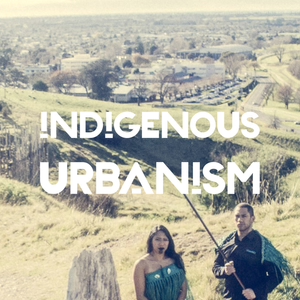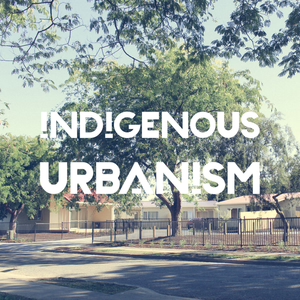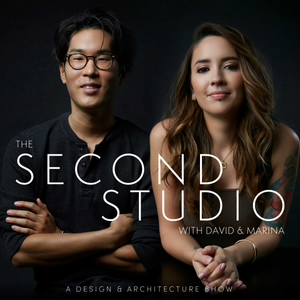
Waimārama Papakāinga
09/27/18 • 18 min
EPISODE SUMMARY: On this episode of Indigenous Urbanism, we continue our haerenga across the Hawke’s Bay to visit a new five house papakāinga development, on the hills of beautiful Waimārama, which for the Renata whānau has been an opportunity to get back to their tūrangawaewae, and to reconnect with their marae and each other.
GUESTS: Paora Sheeran, Eru Smith, Brenda Tatere
FULL TRANSCRIPT:
Jade Kake: Picturesque Waimārama. A beautiful seaside community, a place of halcyon summer days, hot chips and ice cream. But it’s not just a lovely holiday destination, it’s also the home of the Ngāti Hikatoa, Ngāti Kurukuru, Ngāti Urakiterangi, and Ngāti Whakaiti hapū of Kahungungu.
In the 1860s the original Waimārama Block, some 35,000 acres, was leased to two European farmers. The promotion and development of Waimārama as a beach lifestyle area started in the early 1900s, when the large farming stations were broken up to create a beach settlement area. Today, the parts of the original Waimārama block that have been retained in Māori ownership are mostly leased out to Pākehā farmers.
For the Renata whānau, the development of papakāinga on their ancestral land is an opportunity to get back to their tūrangawaewae, and to connect with their marae and wider whānau.
Paora Sheeran: If we look over to the right over here, we’ve got a homeowner who moved over from Dannevirke - and I don't know if you remember on the opening day here back in March 2017, and our kaumātua got up and spoke and said that we've been able to return home, you know, so after about I think it was three generations ago, it might have even been four, they had to move away for farming reasons, and now one of the great-great-mokopuna has come back to Waimārama. And not only for her, with that brings back the other whānau.
JK: That's huge.
PS: Yeah, and that's what can happen in papakāinga. There's the hard items, like the houses, the infrastructure, and then there's also the add-on cultural, social benefits.
JK: Tēnā koutou katoa
Nau mai haere mai ki te Indigenous Urbanism, Aotearoa Edition, Episode 15.
I’m your host Jade Kake and this is Indigenous Urbanism, stories about the spaces we inhabit, and the community drivers and practitioners who are shaping those environments and decolonising through design.
On this episode of Indigenous Urbanism: We travel to Heretaunga to visit a new five house papakāinga development, on the hills of beautiful Waimārama. We spoke with Paora Sheeran, a key driver of papakāinga activity in the Hawke’s Bay.
PS: He mihi poto tenei kia a koutou, ko taimai ki Kahungungu nei, otira nō ki Waimārama te whenua nei, tenei whenua o te papakāinga o te whānau Renata, koira te tino tīpuna Renata. Nā reira nau mai. Nau mai haere mai, nau mai hoki mai. Ko wai tenei? Ko Takitimu te waka, ko Ngāti Kahungunu me Ngāti Pahauwera ngā iwi. Ko Rakau Tatahi me Te Rongo a Tahu ngā marae. Ko Ruahine te pai maunga. Ko Te Rangi Tapu Owhata te taumata. Ko Whatumā te waiu. Nā reira, titahi whakatau ki o tou matou nei rohe. Ko Puara kei runga, ko Whatumā kei raro. Tihei, mauri ora. Ko Paul Sheeran tōku ingoa. So we’re in Waimārama, which is in Hawke's Bay, Kahungunu. As you can see it's coastal, we're right on the beach there. This is the Waimārama 3A1C2 Incorporation, and this is their papakāinga.
JK: So we’re up on the hill, overlooking the Ocean. Is that their marae down there?
PS: Yes, we've got the marae in the background there. So that was part of the reason why this was such a great site, because the incorporation actually owns a number of lands. And so with the marae just across the road, papakāinga, I think there's a kohanga reo over at the marae as well. So it just, you know, the infrastructure works.
JK: And how many acres or hectares?
PS: Probably looking at 7 hectares for this block.
JK: So the incorporation owns this block as well?
PS: Correct. And then they have a number of other blocks they lease out as well.
JK: Awesome. What are the kind of business things they've got?
PS: Mainly leasing for grazing. As with a lot of Māori freehold land, quite often they’re uneconomic parcels. So, unless you can pull together whānau land around you, or work it a bit more intensely, then you're really just leasing out to the local farmer.
But they chose this site because of the location with the marae, with the Waimārama township as well. Cause of the contours as well. You know, it's got a lot of character, this whenua. When the houses were designed, every kitchen window looks out at Motu-o-kura, which is their maunga, you know, their motu. So that was one of the design features that was sort of incorporated in the house design. So then when all the tamariki are doing the dishes they can talk about their motu. It was a good site. They’ve actually got resource consent to build 20 homes u...
EPISODE SUMMARY: On this episode of Indigenous Urbanism, we continue our haerenga across the Hawke’s Bay to visit a new five house papakāinga development, on the hills of beautiful Waimārama, which for the Renata whānau has been an opportunity to get back to their tūrangawaewae, and to reconnect with their marae and each other.
GUESTS: Paora Sheeran, Eru Smith, Brenda Tatere
FULL TRANSCRIPT:
Jade Kake: Picturesque Waimārama. A beautiful seaside community, a place of halcyon summer days, hot chips and ice cream. But it’s not just a lovely holiday destination, it’s also the home of the Ngāti Hikatoa, Ngāti Kurukuru, Ngāti Urakiterangi, and Ngāti Whakaiti hapū of Kahungungu.
In the 1860s the original Waimārama Block, some 35,000 acres, was leased to two European farmers. The promotion and development of Waimārama as a beach lifestyle area started in the early 1900s, when the large farming stations were broken up to create a beach settlement area. Today, the parts of the original Waimārama block that have been retained in Māori ownership are mostly leased out to Pākehā farmers.
For the Renata whānau, the development of papakāinga on their ancestral land is an opportunity to get back to their tūrangawaewae, and to connect with their marae and wider whānau.
Paora Sheeran: If we look over to the right over here, we’ve got a homeowner who moved over from Dannevirke - and I don't know if you remember on the opening day here back in March 2017, and our kaumātua got up and spoke and said that we've been able to return home, you know, so after about I think it was three generations ago, it might have even been four, they had to move away for farming reasons, and now one of the great-great-mokopuna has come back to Waimārama. And not only for her, with that brings back the other whānau.
JK: That's huge.
PS: Yeah, and that's what can happen in papakāinga. There's the hard items, like the houses, the infrastructure, and then there's also the add-on cultural, social benefits.
JK: Tēnā koutou katoa
Nau mai haere mai ki te Indigenous Urbanism, Aotearoa Edition, Episode 15.
I’m your host Jade Kake and this is Indigenous Urbanism, stories about the spaces we inhabit, and the community drivers and practitioners who are shaping those environments and decolonising through design.
On this episode of Indigenous Urbanism: We travel to Heretaunga to visit a new five house papakāinga development, on the hills of beautiful Waimārama. We spoke with Paora Sheeran, a key driver of papakāinga activity in the Hawke’s Bay.
PS: He mihi poto tenei kia a koutou, ko taimai ki Kahungungu nei, otira nō ki Waimārama te whenua nei, tenei whenua o te papakāinga o te whānau Renata, koira te tino tīpuna Renata. Nā reira nau mai. Nau mai haere mai, nau mai hoki mai. Ko wai tenei? Ko Takitimu te waka, ko Ngāti Kahungunu me Ngāti Pahauwera ngā iwi. Ko Rakau Tatahi me Te Rongo a Tahu ngā marae. Ko Ruahine te pai maunga. Ko Te Rangi Tapu Owhata te taumata. Ko Whatumā te waiu. Nā reira, titahi whakatau ki o tou matou nei rohe. Ko Puara kei runga, ko Whatumā kei raro. Tihei, mauri ora. Ko Paul Sheeran tōku ingoa. So we’re in Waimārama, which is in Hawke's Bay, Kahungunu. As you can see it's coastal, we're right on the beach there. This is the Waimārama 3A1C2 Incorporation, and this is their papakāinga.
JK: So we’re up on the hill, overlooking the Ocean. Is that their marae down there?
PS: Yes, we've got the marae in the background there. So that was part of the reason why this was such a great site, because the incorporation actually owns a number of lands. And so with the marae just across the road, papakāinga, I think there's a kohanga reo over at the marae as well. So it just, you know, the infrastructure works.
JK: And how many acres or hectares?
PS: Probably looking at 7 hectares for this block.
JK: So the incorporation owns this block as well?
PS: Correct. And then they have a number of other blocks they lease out as well.
JK: Awesome. What are the kind of business things they've got?
PS: Mainly leasing for grazing. As with a lot of Māori freehold land, quite often they’re uneconomic parcels. So, unless you can pull together whānau land around you, or work it a bit more intensely, then you're really just leasing out to the local farmer.
But they chose this site because of the location with the marae, with the Waimārama township as well. Cause of the contours as well. You know, it's got a lot of character, this whenua. When the houses were designed, every kitchen window looks out at Motu-o-kura, which is their maunga, you know, their motu. So that was one of the design features that was sort of incorporated in the house design. So then when all the tamariki are doing the dishes they can talk about their motu. It was a good site. They’ve actually got resource consent to build 20 homes u...
Previous Episode

Waiohiki Papakāinga
EPISODE SUMMARY: On this episode of Indigenous Urbanism, we visit the site of a whānau papakāinga in Waiohiki, south of Taradale in the Hawke’s Bay, where the Hawaikirangi whānau of Ngāti Pārau are in the process of erecting a 5-dwelling development on their ancestral land.
GUESTS: Paora Sheeran, Hinewai Hawaikirangi
FULL TRANSCRIPT:
Jade Kake: It’s a clear day in Waiohiki, just south of Taradale in the Hawke’s Bay. Otatara Pā looms in the distance, holding a commanding position on a nearby hill. Waiohiki Marae is just down the road, and Tutaekuri the awa meanders between the pā and the marae.
Paora Sheeran: Kia ora, kia ora koutou, nau mai hoki mai ki Kahungungu, nau mai haere mai. O te rā ngā ki Waiohiki nei, ki tenei papakāinga o te whānau Rapihana Hawaikirangi. He whenua Māori tenei, he whenua mai mai. Nā reira, ko i riro ai te whānau nei te whenua, i te wā o rātou tīpuna. Ko mau rātou i te whenua nei. Nā reira, he taonga. He taonga te whenua nei mō te whānau. Nā reira, harikoa te ngākau, harikoa rātou ngākau. I hunga ai i tenei papakāinga, i runga anō i tenei whenua, tuku nei iho, i o rātou nā tīpuna. Nā reira ko te ingoa te whenua nei, ko Waiohiki. Nō reira tenei te mihi ki a koutou, puti puti huri noa i te motu. Nau mai, nau mai, nau mai. So Otatara is the Pā, so that was part of why they wanted to move here, so that they could be close to their maunga, their awa. Tutaekuri te awa, and of course the marae just over the road about 50 metres is their marae, Waiohiki Marae.
JK: Tēnā koutou katoa
Nau mai haere mai ki te Indigenous Urbanism, Aotearoa Edition, Episode 14.
I’m your host Jade Kake and this is Indigenous Urbanism, stories about the spaces we inhabit, and the community drivers and practitioners who are shaping those environments and decolonising through design.
On this episode of Indigenous Urbanism we visit the site of a whānau papakāinga in Waiohiki, south of Tarradale in the Hawke’s Bay, where the Hawaikirangi whānau of Ngāti Pārau are in the process of erecting a 5-dwelling development on their ancestral land.
We spoke with Paora Sheeran, nō Kahungungu, a key driver of papakāinga activity in the Hawke’s Bay, and the project manager for this papakāinga.
PS: We met with the whānau, probably in February 2017, here, on the side of Hatas lane over there. This was obviously just grass, at the time. And they had aspirations to build a papakāinga on their ancestral land. And so we met, we talked about the process, and very quickly we ran a feasibility study process to get from aspiration to a fully costed out project which includes five houses, all of the infrastructure, sewerage, water, upgrade the power, telecom, stormwater, new access way, landscaping, and all of that. So as you can see today, there's three of the houses are standing, closed in, and at a point of the building stage. Stage one's going to be around putting the infrastructure for the five houses in, but building three homes. So TPK approved funding for infrastructure for five homes, and a percentage to assist towards building three rental, affordable rental properties. The other two properties are, they're going to be home ownership. So whether that's home ownership under the trust, or whether that's home ownership in individual whānau. The houses consist of, so we've got two three-bedroom homes, and that's for Hinewai and her whānau. Her brother TK and his whānau, and then the middle house is for their mum, Karen. And so the houses are, the land is put into a whānau trust, and the whānau trust is the one who applied for the funding, and will own and administer the housing on behalf of the whānau. Cause they've got two sisters who are doing university degrees in Wellington, and that was the idea, was when they eventually come back, they will move to the papakāinga as well. So they don't know if it's going to be individual home ownership, or whether the trust will take on that as well.
JK: Oh okay, so Hinewai and her brother both have young families, and they've got two sisters who are studying. And they're mum's going to be here in the middle house.
PS: Yeah, real tight family. And I think that's been the key, to the speed of this whole process is that the whānau are tight, they are united, and just get things done.
JK: We also spoke with Hinewai Hawaikirangi nō Ngāti Parau. Hinewai is a Trustee for the Rapihana Hawaikirangi Whānau Trust and the whānau driver for this project.
Kia ora Hinewai, thank you so much for meeting with me.
Hinewai Hawaikirangi: Tēnā koe, ngā mihi nui kia a koe. Ko Hinewai Hawaikirangi tōku ingoa, ko Ngāti Parau te hapū, ko Otatara te maunga me Hikurangi, ko Tutaehuri te awa, ko Te Whanganui a Rotu te moana. Āe. I'm Hinewai Hawaikirangi, and I'm a trustee of the Rapihana Hawaikirangi Ahu Whenua Trust. Our journey started for us as a family probably three years ago where we succeeded to...
Next Episode

Heretaunga Emergency Housing
EPISODE SUMMARY: On this episode of Indigenous Urbanism, we visit Te Taiwhenua o Heretaunga to learn more about their emergency housing programmes, delivered through an innovative partnership with Emerge Aotearoa.
GUESTS: James Lyver, Jo Hoera, Chris Paku
FULL TRANSCRIPT:
Jade Kake: In the Hawke’s Bay, homelessness has dramatically increased over the past few years and there are large waiting lists for social housing. Like many areas throughout Aotearoa, there is simply not enough affordable housing to meet demand, and reports of overcrowding, and families living in cars have increased.
The kaupapa of Te Whare Huakina, funded by the Ministry of Social Development, is to provide emergency housing in the Hawke’s Bay area.
Jo Hoera: This is one of our typical transitional homes provided for whānau. So, we're just walking into the front of the property. It's got a wee space in the front, a grass area. And then we're going to go into the front door, and straight into the Kitchen area.
JH: Of course we have an oven, we have a pantry, a fridge, and we’ve got all the amenities that you need in the kitchen itself, so, we've got all the crockery that you need, whānau need. We've got all the utensils whānau need, we've got oven trays, we've got a toaster, we've got the jug, we've got pots, we've got pans. So when whānau come into the transitional home, the kitchen is all set to go for them. And so you’ve got a back door entrance as well, and in our back door entrance we've also got safety, so we've got a fence right round the property, this particular property, so that we can safely have children here. We've got some fruit trees, and of course the line outside. Then we have the amenities, got the toilet. We have a bathroom, so we have a shower. Most of the properties have a shower and a bath, because we allow for children, of course, and sometimes they're under one, or where they need a bath to be used. And in this particular house we've got two bedrooms, so the bedrooms are already set up with the beds. So we’ve got pretty much all the amenities that a whānau would need moving into a home. It's all set up with everything, including the washing machine, and we have everything that you would need, like mops and brooms. So, our tenancy manager would go through and make sure that all that's ticked off, the list that they need when they come into a home, including all your blankets, your linen, your towels, it’s all here. So the whānau are in here for 90 days, and they sign their tenancy for 30 days at a time, and so within that period our tenancy manager comes in and does inspections with the property, and renews the tenancy over that 90 day period.
JK: Tēnā koutou katoa
Nau mai haere mai ki te Indigenous Urbanism, Aotearoa Edition, Episode 16.
I’m your host Jade Kake and this is Indigenous Urbanism, stories about the spaces we inhabit, and the community drivers and practitioners who are shaping those environments and decolonising through design.
On this episode of Indigenous Urbanism we visit Te Taiwhenua o Heretaunga to learn more about their emergency housing programmes, delivered through an innovative partnership with Emerge Aotearoa.
We met up with Jo Hoera and Chris Paku from Emerge Aotearoa, at one of Te Whare Huakina’s emergency houses in Napier. Jo is the Team Leader for the Emergency Housing Team within Emerge Aotearoa, and Chris is one of the the Navigators in her team.
JH: Ko Jo Hoera taku ingoa, ko Rangitane me Te Atihaunui-a-paparangi ōku iwi. I'm the Team Leader for Emerge Aotearoa, for the Emergency Housing team. Based in Hastings, and we work collaboratively with Te Taiwhenua o Heretaunga.
Chris Paku: Ko Chris Paku tōku ingoa. I work for Emerge Aotearoa as well, as a Navigator, and part of my role is to help our whānau in our area to find sustainable housing.
JH: Te Whare Huakina came about through, I guess looking at the strength that both organisations have, and coming to an understanding that we both offer different strengths, and that's how we pretty much based ourselves together, but it works. It works really, really well. The team themselves, from Emerge Aotearoa's side, and our team, I can speak for our team, it's pretty awesome to be working inside of a kaupapa Māori service, and supporting whānau in our community to find long-term sustainable housing. We are one team, so we provide the emergency housing service together. So, it's pretty awesome actually. We're unique in the whole of the country, I believe we're the only service that runs that way, with two NGOs working side-by-side. My main role, I guess, is to make sure the service is running okay. The other thing is to, more importantly, is to support my Navigators that are out working out in the field. That might be in terms of making sure they've got the resources they need, training, whether they need upskilling or sending the...
If you like this episode you’ll love
Episode Comments
Generate a badge
Get a badge for your website that links back to this episode
<a href="https://goodpods.com/podcasts/indigenous-urbanism-68738/waim%c4%81rama-papak%c4%81inga-3641751"> <img src="https://storage.googleapis.com/goodpods-images-bucket/badges/generic-badge-1.svg" alt="listen to waimārama papakāinga on goodpods" style="width: 225px" /> </a>
Copy




